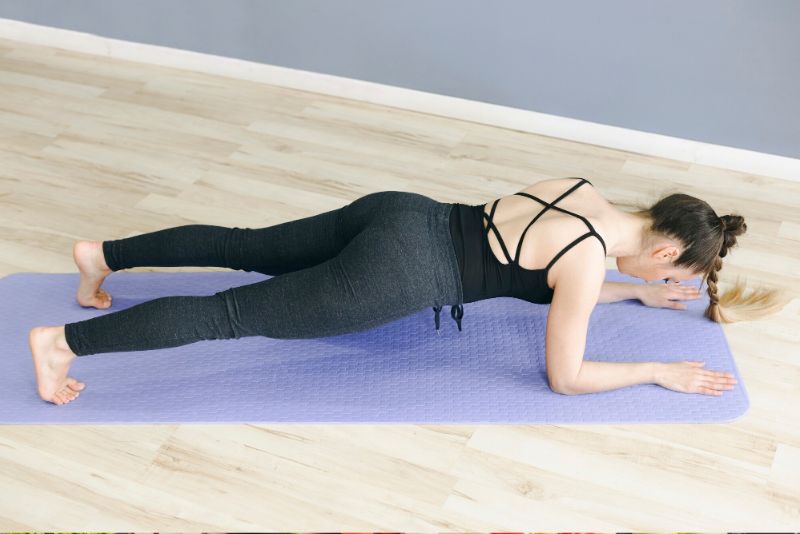That doesn’t mean you must join a gym or invest in expensive equipment. At-home, bodyweight exercises give you a great full body workout. Whether you are an absolute beginner or advanced in the fitness world, home bodyweight exercises develop a full body workout without any equipment. Let’s make the seven do-at-home bodyweight moves to keep you in shape with all the energy.

Benefits of Bodyweight Exercises at Home
But before you proceed with the workouts, let me explain to you why bodily exercises are just the best thing for one’s health.
Convenience and Accessibility
The best thing about bodyweight exercises is that you can do them any place and at any time. You’ll never need additional equipment, which will save you the ticket to the gym. As a result, this will make it more convenient, best of all, in case you are uncomfortable with the residence due to a busy schedule.
Cost-Effective
Fisc Helps you save all that’s spent on the Kimo Money gym, some expensive machines, and a ton of workout kits. You will only need a little space and nothing else.
Full Body Workout
Exercise can work for all muscle groups all at once. This develops additional strength about flexibility in contributions to endurance buildup in the cardiovascular system and an improvement in cardiovascular health in one go.
Scalable Intensity
See just how simple it is with a body scale. That can be done now, whether one is a novice or advanced athlete. Scaled movements can be scalable up or down depending on where the individual is.
Essential Bodyweight Exercises
Now, let’s focus on bodyweight exercises everyone knows, which can be compounded into a full body home workout without any specially designed equipment.
Push-Ups
Push-ups are among the classics—one that engages all the muscles of the chest, shoulders, triceps, and core.
How to Perform a Push-Up:
- Begin in plank position: hands slightly wider apart than shoulder-width.
- Lower your body until your chest almost touches the floor and your arms are bent at a 45-degree angle.
- Push back up to the starting position.
Tip: Make these easier by performing them on your knees; make them more challenging by engaging in decline push-ups with your feet elevated.
Squats
Squats, they’re good for your legs, butt, and core.
What a Glute-Ham Raise Is:
- Position the feet at hip-width apart.
- Lower the body as if you were sitting; keep the chest up and knees behind the toes.
- Push through your heels to return to the initial position.
Tip: Make it more challenging by doing jump squats. Jump from the squatting position as quickly and powerfully as you can.
Pilates
Planks are relevant to your abdominal and core development.
How to Do a Plank:
- Move into a plank position on the ground, the equivalent of lying with support on your forearms.
- Keep your body in a straight line from your head down to your heels.
- Keep that for as long as your body allows it.
Tip: This is a suitable type of hard Side plank or one-armed plank variations, like the plank with shoulder taps; take that fire there.
Lunges
They both work your legs, glutes, and core while also improving your balance.
Ways to perform Lunges:
- Stand with the feet joined.
- Proceed with one step forward with one leg, and then squat down some until at around a 90-degree angle.
- Push through your front heel to the starting position. Repeat on the other side.
Tips: To further challenge yourself with this exercise, try executing walking lunges or reverse lunges.
Burpees
Burpees are a full body exercise that boosts your cardiovascular fitness and strength.
How to Properly Execute a Burpee:
- Begin in a standing position.
- Now, squat down and place your hands on the floor.
- Kick your feet back into a plank.
- Push up.
- Place feet back to hands then jump.
Tips: Take out the push-up or the jump during the burpee.
Glute Bridges
Glute Bridges are effective for targeting your glutes, hams, and lower back.
How to Do a Glute Bridge:
- You lie on your back with knees bent and feet placed flat on the floor, hip-width apart.
- Then, lift your hips back up, squeezing your glutes together.
- Now do that all over again.
Tips: Advance the challenge with single-leg glute bridges.
Bicycle Crunches
Bicycle crunches are perfect because they work your obliques and most of your midsection.
How to Bicycle Crunches:
- Lie on your back, place your hands beyond your head for support, and raise your legs off the floor.
- Bring one knee up to the chest at a time, along with the rotation of the upper body, bringing the opposite elbow to that knee.
- Pedal in a reverse motion.
Tips: Proper control of movements The best means to activate your core muscles in a controlled way.
Full Body Workout at Home without Equipment.
So now that we have armed ourselves with some great bodyweight exercises, it’s time to string them into the right combination for a routine. I lead you through different full body sample routines that you can begin immediately:
Sample Full Body Workout Routine
1. Warm-up for (5-10 minutes)
- Jumping jacks
- Arm circles
- High Knees
2. Workout
- Push-ups: 3 sets of 10 to 15 repetitions
- Squats:3 sets of 15 to 20
- Planks: 3 sets of 30-60 seconds
- Lunges: 3 sets of 10-15 reps in each leg
- Burpees: 3 sets x 10–15 reps
- Glute Bridges: 3 sets of 15-20 reps
- Bicycle crunches: 3 x 15 to 20
3. Cool-Down (5-10 minutes)
- Stretching exercises
- Deep breathing
Tips for Success
- Be Consistent: This workout is better if worked out thrice or four times a week to fetch perfect results.
- Listen to Your Body: When you feel any painful sensation, stop; you should not confuse this feeling with the burning sensation from a good workout; rest.
- Stay Hydrated: Drink plenty of water before, during, and after exercise.
- Progress Gradually: Add reps or sets according to strength level. Common Bodyweight Home Workouts
FAQs
Can you build muscles with bodyweight exercise?
- Yes, you can develop muscles by doing bodyweight exercises. Consistent and progressive exercising in the process would help you build muscle strength.
How long do you do a bodyweight workout?
- One straightforward body weight training routine can vary from 20 to 45 minutes for a highly fit trainee who is training hard.
Would you like to do a warm-up before bodyweight exercise?
- No, not really. In reality, it also alerts the muscles and joints in advance about what to expect, diminishing injury chances during exercises and ensuring better performance.
Are bodyweight exercises good for losing weight?
- The qualities of bodyweight exercises are aspects that help in weight loss through calorie burning and the restoration of muscle.
What if multiple exercises are too hard for me to do?
- Most bodyweight exercises can easily be modified and scaled to various fitness levels. For example, one might do knee push-ups instead of a traditional push-up or squat to a chair.
How may I progress with my body-weight exercise program?
- The intensity of a movement can routinely be increased with added repetitions/sets, reduced recovery between repetitions during a set, or stepping up to a progression of the movement with more incredible difficulty.
Conclusion
Discussion Body weight exercises are probably the most flexible and convincing way to be fit without equipment at home. They help to evoke the entire body. Otherwise, there would be an individual modification depending on the fitness level. This way, it fits everyone. You can do everything at home; you just have to put in push-ups, squats, lunges, planks, burpees, glute bridges, and bicycle crunches. Always remember that the keys to your goals are consistency and progression; challenge yourself just to enjoy the trip towards a healthier and improved level of Health and fitness.










